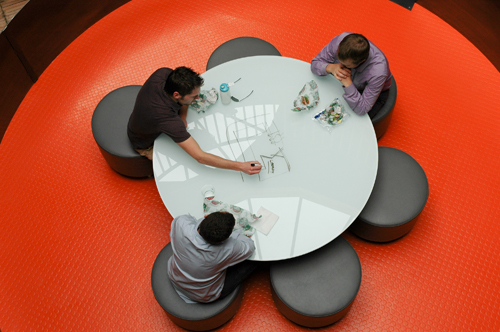Efficiency Is Sustainability
Thu, Apr 28, 2011 Albert Lam Albert Lam, Sustainable Design, K-12 Schools, Architectural Trends, Integrated Design
When we talk about sustainability, we often mention new advancing technologies in the green movement, architectural trends, and careful use of resources. But at its heart, sustainability really just means doing something in a way that can be repeated over and over in the future. We at LPA pride ourselves on being a leading sustainable design firm, and this starts with being efficient internally, before any of our projects ever leave the office. This mindset is keyed by several guidelines – all linked by the central theme of clear, comprehensive communication.
 1. Establish Clear, Concise, Comprehensive Scope of Work
1. Establish Clear, Concise, Comprehensive Scope of Work
This is conveyed from the very beginning. Having everyone on the project team aware of exactly what goes into a project (and what doesn't) enables members to work concertedly toward a defined goal. Issues and potential obstacles can be clearly identified and addressed. Proper documentation can be provided. Redundant work can be avoided, since the team doesn't have to worry about designs being drastically redone, due to changes from unclear scope that are later clarified. Putting forth the right amount of work is the most obvious way of being efficient.
2. Define Project Roles, Expectations, and Responsibilities
It's important to communicate tasks among a team to avoid questions and confusion. This also eliminates overlapping duties and wasted resources during the course of a project. Setting expectations gives everyone goals to shoot for, and accompanying these expectations with high standards ensures a quality product. To have concrete goals, and to have a desire to beat them, helps establish a tight-knit teamwork that uses its integrated design resources to provide exactly what is being looked for. It's synergy – efficiency aimed at the highest order.
3. Schedule Key Communication Meetings
These typically come at major milestones, such as project kickoff or the conclusion of phase deadlines. Conducting major coordination, providing schedule updates, and reiterating expectations reinforces the goals of the team. In an integrated design firm, it's even more important to make sure information is effectively relayed. Efficiency is the product of hard work in management and organization. It's not difficult for an integrated design team – which is inherently larger than a traditional design team yet which works more intimately together, to miss a dot along the line of important details. Even "small" projects can have large teams when each discipline is factored, so regular communication is key to maintaining these efficient standards.
Engaging in these habits helps focus work and reinforce the drive toward sustainability in all aspects. There's a certain sense of "practice what you preach" in these guidelines ... with an emphasis on practice. Of course, in our line of business, projects rarely go as smoothly as envisioned, but striving toward efficiency helps temper any road bumps that pop up along the way. And, of course, produce a refined, well-crafted project.
Albert Lam is a Technical Designer at California-based LPA Inc. He is a LEED accredited professional who specializes in the design and implementation of K-12 schools.